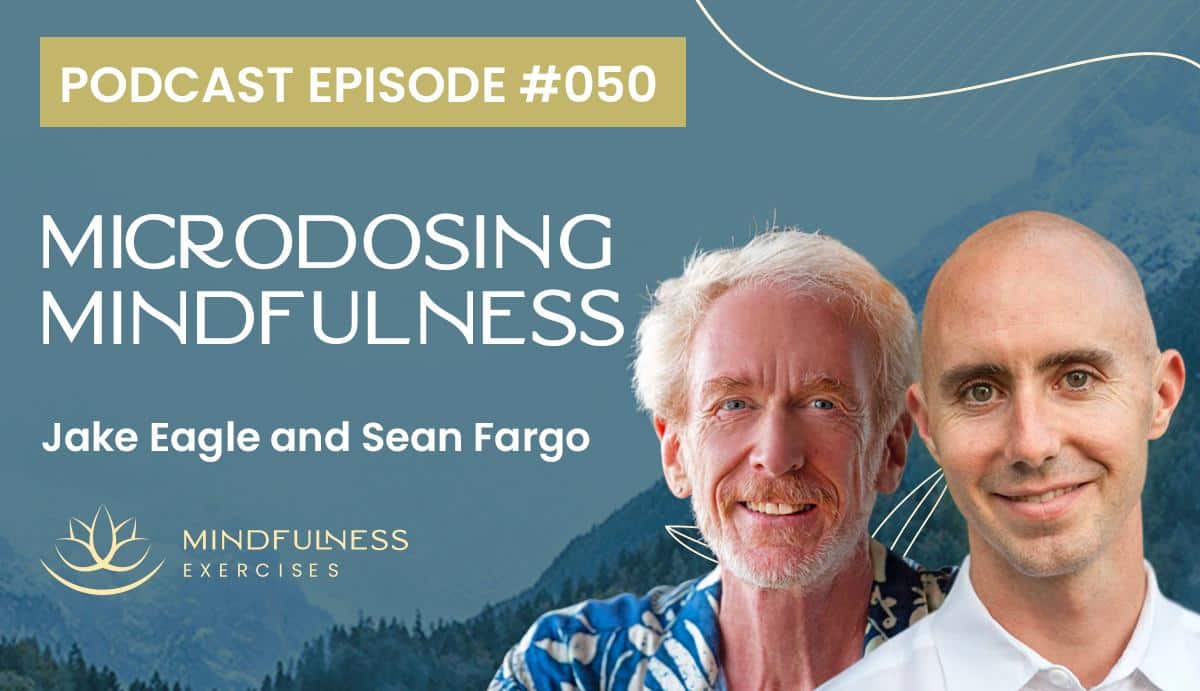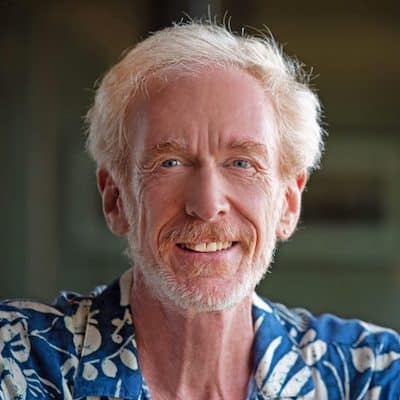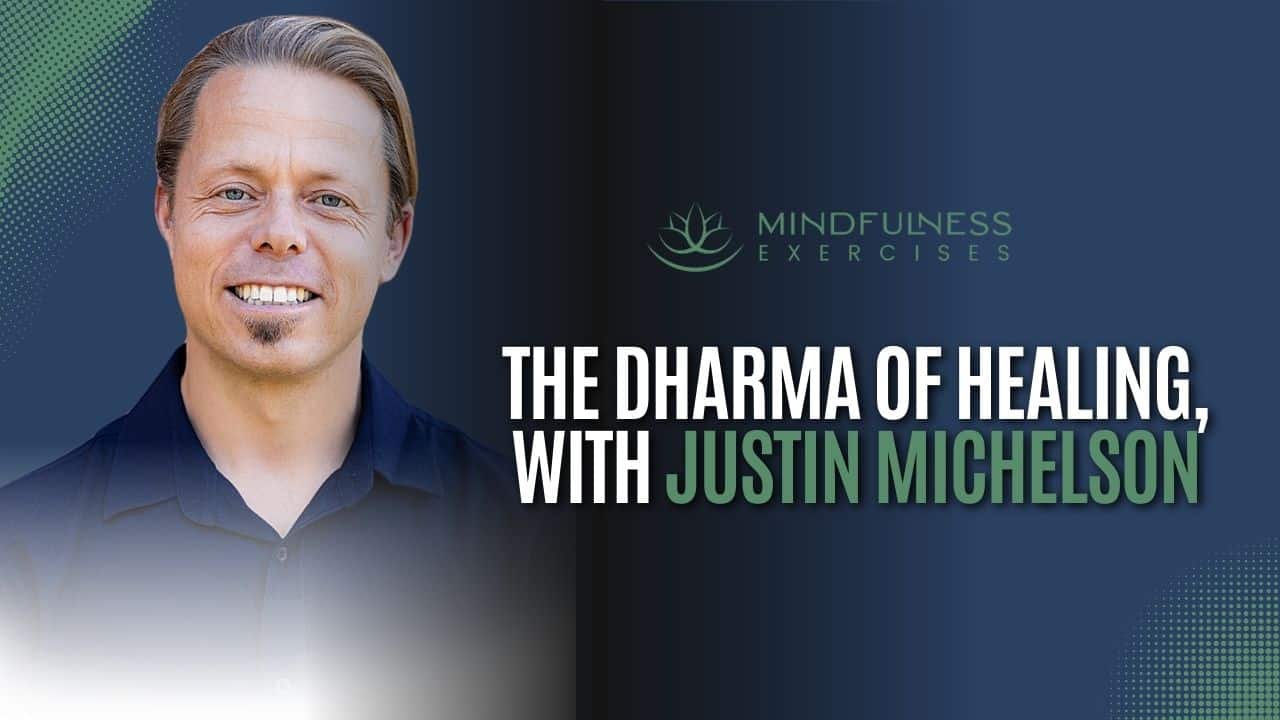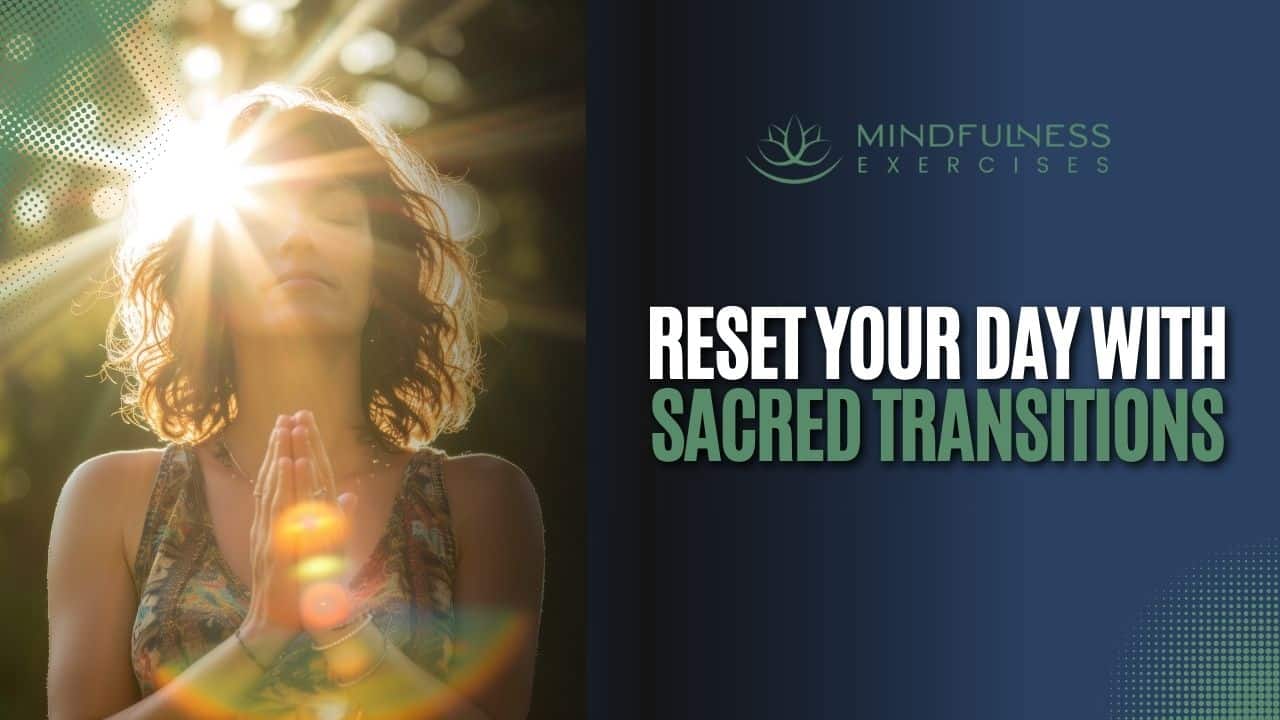Listen now

If you could realize the stress-reducing and heart-opening benefits of mindfulness with a practice that takes less than 1 minute per day, would you practice more often?
Neuroscience has shown that when it comes to changing our brains, consistency is more important than the duration of our practice. But it’s not always easy to fit in a meditation daily. Microdosing mindfulness might be the solution we need to practice more often, and with less resistance.
In this episode, Sean Fargo speaks with Jake Eagle, co-author of The Power of Awe: Overcome Burnout & Anxiety, Ease Chronic Pain, Find Clarity & Purpose - In Less Than 1 Minute Per Day. For an interview with Jake’s co-author, Michael Amster, listen to episode #048, The Power of Awe, with Michael Amster and Sean Fargo.
Sponsored by our Mindfulness Meditation Teacher Certification Program
MindfulnessExercises.com/Certify
What You’ll Learn in This Episode:
Show Notes & Quotes:
How brief practices help make mindfulness accessible
Just the suggestion of meditating for 10 minutes daily can trigger resistance. For the participants in a mindfulness course led by co-authors Jake Eagle and Michael Amster, this reluctance made it challenging to reap the benefits of the practice, even for those who did the meditations.
“Not only is it interesting at the level of willingness, in other words, ‘ok, I’ll give that a try.’ But it’s also interesting physiologically and psychologically. What happens when you ask someone to do something and they go into a state of resistance? [...] I think that impedes the experience. So we eliminate that.”
The power of approaching meditation with positivity
Eliminating resistance helps us approach meditation with more openness. It can also help to give meditation a more positive spin. What if, instead of simply opening our awareness to what’s present, we intentionally placed our awareness on something we appreciate, find amazing, or highly value? This is the power of gratitude, of some loving-kindness practices, and also what drives the A.W.E. Method.
“Most mindfulness practices that I’m aware of have a quality of neutrality to them. So, a thought arises, you notice it, you let it go. You don’t label it, you don’t judge it, you just let it go. There’s this neutrality. And I don’t know if you ever played pool, but they talk about when you play pool you can put ‘English’ on the ball. You can spin the ball one way or another. Well, what we’re doing is we’re putting some English on the meditation.”
How to practice the A.W.E. Method
The A.W.E. Method is an acronym of awe that stands for Attention, Wait and Exhale (or Expand). We begin by placing our awareness on something we deeply value. We then wait for one cycle of breath. After this pause, we intentionally exhale a little longer than normal, allowing sensation in the body to expand. In just 15-30 seconds, we’re left feeling relaxed, yet alert and connected.
“Awe is unusual in that it doesn’t take you completely into the parasympathetic, it has a little bit of sympathetic activation. It’s kind of like that state when we were playful as a child. You’re relaxed, but you’re excited. That’s where awe lives.”
What happens when we wait
The A.W.E. method emphasizes a particular in-between state by asking us to wait between our brief observation and the exhalation. In our on-the-go, busy lives, waiting is something we typically dread. But in this brief moment of waiting, we quiet the brain’s default mode network and become available for a deep sense of relaxation.
“The wait is something that - it really is a gift. And if you think about waiting, [...] waiting for another person, or waiting and holding a door for someone, or someone holds the door for us, they wait for us, and how generous that feels, how positive that feels. [...] And so in this case, what’s happening is that we’re waiting for ourselves. I’m waiting for myself. And it feels very much like a gift.”
Inducing a state of presence in just 15 seconds
Practicing the A.W.E. Method connects us to the present moment. By doing so, it also connects us to an expanded sense of presence and connection with the people we’re in relationship with, as well as with everything around us. These benefits are enhanced by the simple fact that we can practice the A.W.E. Method at any time, in any situation.
“We’re remarkably present in that moment. We’ve induced a state of presence. And we can do this in the presence of other people, I can do this with you, I can do this while I’m cooking a meal, I can do this while I’m playing with my child, I can do this at any time.”
The A.W.E. Method as a preventative
The accessibility of the A.W.E. Method allows us to practice multiple times throughout the day. Continuously resetting the nervous system in this manner leads to less burnout and greater resilience. We can also apply A.W.E. preventatively to prepare the nervous system for a challenging, stressful situation, or when we just want to enter into a conversation with greater spaciousness and presence.
“If I need to have a conversation with someone and I imagine it may be a difficult conversation, if I access a state of awe prior to having the conversation, it changes the tone and nature of the conversation. [...] Let me call it a ritual. Let’s have a very short ritual that sets the tone for where we’re going and how we’re going to interact.”
Is microdosing mindfulness the future?
Because it is short and accessible, the A.W.E. Method is a practice we could use more of in everyday situations. If we did use it more often, it would have wide-ranging impacts. Could it be that microdosing is the future of mindfulness?
“We might start seeing this, say microdosing, more formally led when a doctor walks into the waiting room with a patient, when the CEO is about to start a board meeting, you know, before significant conversations happen.”
Additional Resources:

About Jake Eagle:
Jake Eagle is a licensed psychotherapist. After 25 years of practice, he now refers to himself as a meta-therapist, coaching and mentoring people to see what’s possible beyond therapy. He believes therapy has its place, but that talking about the past also has its limitations.
His book, The Power of Awe: Overcome Burnout & Anxiety, Ease Chronic Pain, Find Clarity & Purpose - In Less Than 1 Minute Per Day, describes a simple, 15-second mindfulness practice that turns ordinary moments into awe-inducing experiences which help shift us into a more expansive state of consciousness.
Jake is also the author of Get Weird, Make the Most of Your Life, and the co-founder of Live Conscious, a community of people practicing skills for living and loving more consciously.



